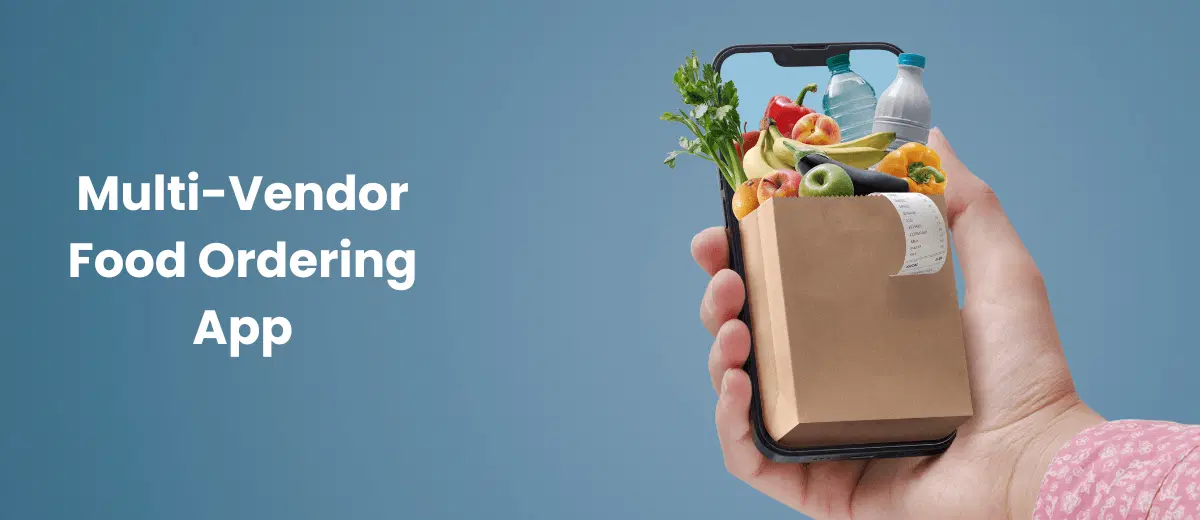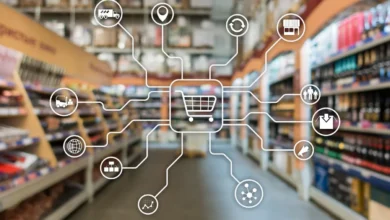
Advantages of Building a Multi-vendor Food Ordering App
In the digital age, convenience is key, and consumers are increasingly turning to mobile apps for their daily needs. One booming sector is online food delivery, where multi-vendor food ordering apps are transforming the way people dine. These platforms allow users to browse multiple restaurants, compare menus, and order food directly from various vendors, all in one place. For entrepreneurs, developing a multi-vendor food ordering app is a profitable investment. But what exactly are the advantages? In this blog, we’ll explore the key benefits and why it’s an attractive option for business owners, restaurants, and consumers alike.
Table of Contents
Advantages of Building a Multi-vendor Food Ordering App
1. Multiple Revenue Streams
One of the biggest advantages of building a multi-vendor food ordering app is the potential to generate revenue from multiple sources. These include:
- Commission fees: The app owner can charge a commission on every order placed through the app.
- Delivery fees: Charging customers for delivery services is another way to earn money.
- Advertising: Restaurants can pay to have their listings featured prominently, giving them more visibility.
- Subscription services: Offering premium membership to customers can provide extra revenue in exchange for benefits like free delivery or exclusive offers.
This diversified income model makes it easier for app owners to achieve long-term profitability, compared to single-vendor apps. With food delivery app development, businesses can expect to set up a robust system where multiple vendors contribute to steady cash flow.
2. Wider Customer Reach
A multi-vendor food ordering app caters to a broader audience by offering a variety of restaurants, cuisines, and price points, all under one platform. Consumers appreciate the ability to explore multiple options without having to switch between different apps or websites. As more users engage with the platform, the potential for increased orders grows. This, in turn, benefits both the app owner and the restaurants involved.
This wide customer reach can also help tap into previously inaccessible markets. By bringing together vendors from various locations, a multi-vendor app ensures that users have access to more choices, increasing the likelihood of repeat business.
3. Operational Efficiency for Vendors
From a restaurant’s perspective, joining a multi-vendor food ordering app can reduce operational stress. The app takes care of order processing, delivery, and sometimes even customer support, allowing restaurants to focus on their core business – cooking delicious food. Vendors no longer need to worry about maintaining their own app, hiring delivery staff, or dealing with technical challenges. This streamlined process can lead to higher efficiency and lower overhead costs.
Moreover, many multi-vendor platforms offer integrated analytics tools that allow vendors to track their sales, understand customer preferences, and make data-driven decisions to improve their operations.
4. Cost-effectiveness for Entrepreneurs
Developing and maintaining a multi-vendor food ordering app is more cost-effective in the long run compared to running multiple single-vendor apps. While the initial mobile app development cost for a multi-vendor app may seem high, it is justified by the benefits. Instead of creating separate apps for each restaurant, a multi-vendor platform hosts all vendors under one roof, minimizing the need for separate technological infrastructure.
Additionally, scaling the platform is easier and more affordable. As the business grows, adding more vendors does not require major changes to the core platform, saving time and money on development.
5. Improved Customer Experience
Multi-vendor apps typically offer a better user experience than single-vendor apps, thanks to a variety of choices. Customers can compare menus, prices, and delivery times across multiple restaurants without leaving the platform. Features such as live order tracking, multiple payment options, and personalized recommendations enhance the overall experience.
Furthermore, multi-vendor apps are often equipped with intuitive interfaces and streamlined navigation, making it easier for customers to place orders quickly. This leads to higher customer satisfaction and, ultimately, increased loyalty to the platform.
6. Scalability and Flexibility
Once your multi-vendor food ordering app is up and running, scaling the platform to accommodate more vendors is relatively easy. Unlike traditional brick-and-mortar businesses, which are limited by physical space, online platforms can grow exponentially with little additional cost. You can add more restaurants, expand into new geographical locations, or introduce new features without significantly increasing the mobile app development cost.
Additionally, the flexibility of a multi-vendor app allows for continuous updates. New features can be rolled out based on customer feedback or emerging market trends, keeping your platform fresh and competitive.
7. Brand Recognition and Market Leadership
By providing a one-stop solution for food delivery, multi-vendor apps quickly become household names. The convenience of having multiple food options in one place makes these apps popular, and with increased popularity comes brand recognition. As more users download and interact with the app, your platform can establish itself as a market leader in the food delivery space.
Building a strong brand presence helps you stay ahead of competitors and even attract larger partnerships with well-known restaurant chains. Moreover, once a platform has gained enough recognition, smaller businesses are more likely to join, further expanding the app’s vendor base.
8. Efficient Marketing and Promotions
A multi-vendor food ordering app allows you to run centralized marketing campaigns that benefit all restaurants on the platform. You can promote discounts, special events, or seasonal menus to a wide audience with just one campaign. This not only helps vendors increase their sales but also improves the overall user experience by providing customers with attractive deals.
Additionally, app owners can leverage advanced marketing tools like push notifications and in-app advertising to engage users directly. These tools can be customized based on user behavior and preferences, making them more effective than traditional marketing methods.
9. Data-Driven Decision Making
Another major advantage of building a multi-vendor food ordering app is the wealth of data that comes with it. By gathering insights from user behavior, preferences, order history, and feedback, you can make informed decisions to improve the platform. This data can help optimize operations, enhance user experience, and increase revenue.
Restaurants can also use the data to better understand their customers, adjust their menus, and offer promotions that target specific audiences. In the digital world, data is one of the most valuable assets, and a multi-vendor app gives you access to this treasure trove of information.
10. Lower Entry Barrier for New Vendors
For small restaurants or food vendors looking to enter the food delivery market, building their app may be too expensive and time-consuming. However, joining a multi-vendor platform provides an affordable and effective way to access a large customer base without the high upfront investment. This lowers the entry barrier for new vendors and allows them to compete with more established businesses.
With more vendors joining, the app itself becomes richer in terms of variety and offerings, attracting more users and creating a win-win situation for all stakeholders.
Conclusion
In today’s digital marketplace, developing a multi-vendor food ordering app offers a range of benefits for app owners, restaurants, and customers alike. From multiple revenue streams and wider customer reach to operational efficiency and improved customer experience, the advantages are clear. Moreover, the mobile app development cost is a worthwhile investment, given the scalability, flexibility, and profitability that come with a multi-vendor platform.
By providing a comprehensive solution for food ordering, a multi-vendor app can become a key player in the food delivery industry. Whether you’re an entrepreneur looking to enter the market or a restaurant aiming to expand your customer base, a multi-vendor app can be the perfect platform to achieve your business goals.
FAQs
- How much does it cost to develop a multi-vendor food ordering app? The mobile app development cost can range from $20,000 to $80,000, depending on features, technology stack, and geographical location of the development team.
- What are the key features of a multi-vendor food ordering app? Essential features include multi-restaurant listing, user profiles, real-time order tracking, multiple payment gateways, and advanced search filters.
- How can a multi-vendor food ordering app help small restaurants? It allows them to reach a wider audience without the need to invest in their own technology or delivery infrastructure, reducing costs while increasing visibility.
- Is it profitable to launch a multi-vendor food ordering app? Yes, thanks to multiple revenue streams like commission, delivery fees, and advertising, these platforms can be highly profitable.








